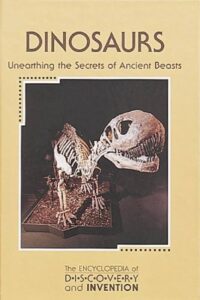Are Giraffes Dinosaurs
In the vast expanse of Earth's history, creatures have roamed the land, soared through the skies, and swum the depths of the oceans. Among these, giraffes stand tall today, not just in stature but also in public curiosity, prompting some to wonder if they share a lineage with the dinosaurs of ancient times.
While this question might seem straightforward, it unravels a complex tapestry of evolutionary history and biological classification. The answer not only sheds light on the giraffe's fascinating past but also invites further exploration into how life on Earth has evolved over millions of years, leaving one to ponder what connections exist between the giants of today and those of the prehistoric world.
Key Takeaways
- Giraffes are not descendants of dinosaurs; they evolved from ungulates after dinosaurs' extinction.
- Dinosaurs and giraffes filled different ecological niches and evolved in separate eras.
- Giraffes' unique adaptations, like long necks and specialized stomachs, distinguish them from dinosaurs.
- The catastrophic extinction event that ended the Age of Dinosaurs paved the way for mammalian evolution, including giraffes.
The Fascination With Giraffes
Humans have long been captivated by giraffes, not only for their towering presence but also for their unique physiological adaptations. Giraffes possess an intricately evolved cardiovascular system, essential for maintaining blood flow to their brains across their long necks, a feature unparalleled in the animal kingdom.
Their specialized ossicones, distinct from horns or antlers, serve both as a thermal regulation mechanism and a defense tool. Giraffes have also developed a highly specialized dietary preference, relying on acacia leaves, which they can access thanks to their height and prehensile tongues. This dietary specialization, in turn, affects their habitat choices and social structures.
Scientific inquiry into these adaptations reveals a complex interplay between giraffes and their ecosystems, showcasing their evolution as a finely tuned response to environmental challenges, rather than a simple anomaly.
Defining Dinosaurs
To accurately address the query of whether giraffes are dinosaurs, it's crucial to first establish a clear definition of what constitutes a dinosaur. Dinosaurs, a group of reptiles, emerged during the Mesozoic Era, specifically the late Triassic period, exhibiting unique features that set them apart from other creatures.
- Bipedal and Quadrupedal Posture: Dinosaurs evolved various postures; while some were bipedal, others walked on all fours.
- Distinct Hip Structures: They possessed either a bird-like (ornithischian) or lizard-like (saurischian) pelvic structure.
- Lay Eggs: Dinosaurs reproduced by laying eggs.
- Diverse Ecosystem Roles: They filled numerous ecological niches, from herbivores to carnivores.
- Feathers and Scales: Evidence suggests some had feathers, while others had scales, indicating a wide range in physical appearance.
Giraffes: An Overview
Having established what constitutes a dinosaur, it's essential to examine giraffes, the tallest living terrestrial animals, to understand their classification and evolutionary history. Giraffes belong to the family Giraffidae and are distinguished by their exceptionally long necks and legs, characteristics that have evolved over millions of years.
This unique morphology allows them to access foliage unavailable to other herbivores, giving them a distinct advantage in their savanna habitats. Their evolutionary path diverges significantly from that of dinosaurs, aligning closer with other mammals. Giraffes are ruminants, possessing a complex, four-chambered stomach for digesting tough plant matter, a trait not found in dinosaurs.
Analyzing their genetic lineage reveals that giraffes share a common ancestor with deer and bovines, further distancing their connection from dinosaurs.
The Age of Dinosaurs
The Age of Dinosaurs, spanning the Mesozoic Era, marks a pivotal epoch in Earth's history characterized by the dominance of dinosaurs over approximately 180 million years.
This era's timeline is crucial for understanding the evolutionary milestones leading to the catastrophic extinction event that ended their reign.
Analyzing theories surrounding this mass extinction offers insights into the environmental and biological factors that shaped the planet's biodiversity, setting the stage for the emergence of mammals and, eventually, modern species like giraffes.
Dinosaur Era Timeline
Often overlooked, dinosaurs ruled the Earth during the Mesozoic Era, a period that spanned about 180 million years before coming to an abrupt end approximately 66 million years ago. This era is divided into three major periods, each marking significant evolutionary milestones and ecological transformations.
- Triassic Period (252-201 million years ago): The emergence of the first dinosaurs, alongside early mammals and reptiles.
- Jurassic Period (201-145 million years ago): Saw the rapid expansion of dinosaurs, with giants like Brachiosaurus dominating the landscape.
- Cretaceous Period (145-66 million years ago): Featured the appearance of flowering plants and the dominance of large carnivorous and herbivorous dinosaurs.
This timeline underscores the dinosaurs' long reign and adaptation to changing environments, illustrating their complexity and diversity until their sudden disappearance.
Extinction Event Theories
While numerous theories exist regarding the extinction of dinosaurs, a leading hypothesis points to a catastrophic asteroid impact as the primary cause, sparking a series of environmental disasters. This theory, supported by a layer of iridium found worldwide, suggests that the collision threw massive amounts of debris into the atmosphere, significantly reducing sunlight penetration. Consequently, photosynthesis rates plummeted, leading to a drastic decrease in plant life, which formed the base of the food web.
Secondary effects included global cooling and acid rain, further stressing the ecosystems. While other theories propose volcanic activity or climate change as contributing factors, the asteroid impact hypothesis aligns with geological evidence and timelines, offering a coherent explanation for the sudden disappearance of dinosaurs from the fossil record.
Mesozoic Era Overview
Spanning from approximately 252 to 66 million years ago, the Mesozoic Era marks a pivotal chapter in Earth's history, characterized by the dominance of dinosaurs and significant evolutionary advancements among plants and animals.
- Triassic Period: The era begins with the Triassic Period, witnessing the rise of the earliest dinosaurs alongside the first true mammals.
- Jurassic Period: Followed by the Jurassic, this period sees the dinosaurs flourishing, with gigantic sauropods and fierce predators like the Allosaurus roaming the earth.
- Cretaceous Period: The final chapter, the Cretaceous, introduces iconic species such as Tyrannosaurus rex and Triceratops, while flowering plants begin to dominate.
- Continental Drift: Throughout the era, the slow drift of continents alters habitats, influencing evolutionary paths.
- Mass Extinction: It concludes with a mass extinction event, wiping out the dinosaurs but paving the way for mammalian dominance.
Evolutionary Paths Explored
Giraffes and dinosaurs embarked on distinctly separate evolutionary journeys millions of years ago, diverging from common ancestors in the complex web of life. While dinosaurs thrived during the Mesozoic era, giraffes' predecessors navigated a path that eventually led to their emergence in the Cenozoic era, long after dinosaurs had become extinct.
This divergence is rooted in the evolutionary pressures and environmental shifts each lineage faced. Dinosaurs, for instance, dominated terrestrial ecosystems, adapting to various niches that spanned from carnivorous giants to herbivorous behemoths. In contrast, the ancestors of modern giraffes evolved unique traits, such as elongated necks and legs, to exploit different ecological niches, particularly in browsing for foliage.
This evolutionary trajectory underscores the adaptive responses to changing environments and survival strategies that define the rich tapestry of life on Earth.
Giraffe Ancestors Unveiled
Researchers have meticulously traced the evolutionary path of giraffes, unveiling their ancient relatives with precision.
This exploration reveals a complex journey from early ancestors to the modern giraffes we recognize today.
Ancient Relatives Explained
Delving into the lineage of giraffes reveals a fascinating journey through evolutionary history, marked by significant anatomical and ecological adaptations. Their ancient relatives share a common ancestor with deer and antelopes, highlighting a diverse family tree that extends millions of years into the past.
Early giraffids showcased shorter necks, indicating a gradual evolution towards their modern counterparts. Fossil evidence suggests a variety of giraffid species, each adapted to their specific ecological niche. Climatic changes pushed giraffes towards taller vegetation, favoring longer necks for survival. Their unique ossicones, or horn-like structures, have been a consistent trait, evolving from more rudimentary forms. Giraffes' ancestors roamed across Eurasia, with their evolution closely mirroring environmental shifts and predation pressures.
This evolutionary tapestry illustrates the complex interplay between adaptation and survival, underscoring giraffes' enduring legacy.
Evolutionary Path Traced
Tracing the evolutionary path of giraffes unveils a lineage that intricately intertwines with the shifting landscapes and climatic conditions of ancient Earth. The ancestors of modern giraffes, belonging to the family Giraffidae, embarked on their evolutionary journey approximately 25 million years ago during the Miocene epoch.
This period marked a critical phase where environmental transformations propelled the diversification of plant and animal species. Giraffids, initially resembling small deer with short necks, gradually adapted to changing ecosystems. The emergence of taller trees and the competition for foliage drove these creatures to evolve longer necks, a hallmark of their survival strategy.
This evolutionary trajectory highlights the giraffe's adaptation to its environment, showcasing natural selection's role in shaping the distinctive morphological features observed in these majestic creatures today.
Misconceptions Cleared
Dispelling common myths, it's crucial to understand that giraffes aren't descendants of dinosaurs, but rather belong to a completely different lineage in the animal kingdom. This clarification is essential for accurately grasping both giraffes' evolutionary journey and the broader context of vertebrate evolution.
To further elucidate:
- Giraffes are mammals, whereas dinosaurs were reptiles.
- Dinosaurs went extinct 65 million years ago, long before giraffes evolved.
- The evolutionary ancestors of giraffes were ungulates, not theropods.
- Giraffe neck evolution is a result of selective feeding pressures, not a trait inherited from dinosaurian ancestors.
- Giraffes share a more recent common ancestor with other mammals than with any dinosaur.
Understanding these distinctions helps correct misconceptions and fosters a more informed appreciation of giraffe evolution and their place within the animal kingdom.
Comparative Anatomy
Having addressed the evolutionary distinctions between giraffes and dinosaurs, we now turn our attention to comparing their anatomical features to further highlight the clear differences between these two groups.
Giraffes, mammals from the family Giraffidae, boast a skeletal structure that supports their unique vertical stature and allows for high flexibility in their necks, which isn't seen in dinosaurs.
Dinosaurs, on the other hand, had a vast array of skeletal structures, reflecting their diverse roles as predators, herbivores, and omnivores, but none possessed the distinct, long cervical vertebrae of giraffes.
Furthermore, giraffes have a four-chambered heart, a trait typical of mammals, which contrasts sharply with the two-chambered heart believed to be present in dinosaurs.
This comparative analysis reveals the significant anatomical divergence, underscoring that giraffes aren't descendants of dinosaurs.
Modern Relatives of Dinosaurs
Birds, the modern descendants of theropod dinosaurs, showcase a fascinating evolutionary transition from reptilian to avian characteristics. This lineage illuminates the complex journey from ancient, ground-dwelling creatures to the diverse array of birds we see today. Their shared traits offer compelling evidence of this deep evolutionary connection.
- Feathers: Both theropod dinosaurs and modern birds possess feathers, a trait suggesting a direct lineage.
- Hollow Bones: This feature, crucial for flight in birds, also appears in many theropod skeletons.
- Three-toed Limbs: Birds and many theropods share this limb structure, optimal for balance and movement.
- Brooding Behavior: Similarities in nesting and egg incubation practices hint at behavioral continuity.
- Fused Clavicles: The 'wishbone,' a characteristic feature in birds, is also found in theropods, indicating a common ancestry.
These elements paint a detailed picture of the enduring legacy of dinosaurs in their avian descendants.
The Extinction Event
Approximately 66 million years ago, a catastrophic event led to the mass extinction of dinosaurs, forever altering the course of Earth's biological history. Scientists attribute this mass extinction to a combination of devastating volcanic activity and a colossal asteroid impact near what's now the Yucatán Peninsula in Mexico.
The resultant environmental changes, including drastic temperature fluctuations and blocked sunlight due to atmospheric debris, severely disrupted the Earth's ecosystems. These conditions made survival untenable for many species, leading to the dinosaurs' extinction.
The event didn't just clear the way for the rise of mammals; it fundamentally reshaped life on Earth, setting the stage for the evolutionary pathways that would eventually lead to the diverse array of species we see today, including giraffes.
Giraffes in Today's World
While the extinction event 66 million years ago paved the way for the emergence of new life forms, today's giraffes stand as a testament to the evolutionary adaptability and diversity that followed. These majestic creatures, unique in their long necks and distinct coat patterns, play a critical role in their ecosystems.
- Habitat: Predominantly found in the savannas and woodlands of Africa.
- Diet: Herbivorous, feeding mainly on leaves and twigs, particularly from acacia trees.
- Social Structure: Form loose, open herds without strict hierarchies.
- Conservation Status: Faced with threats from habitat loss, poaching, and climate change.
- Biological Adaptations: Their long necks allow them to reach food sources inaccessible to other herbivores, and their spotted coats provide camouflage in the dappled light of their wooded habitats.
Conclusion
In conclusion, giraffes, those towering sentinels of the savannah, aren't descendants of dinosaurs, despite the common fascination. The evolutionary paths of these two groups diverged long before giraffes stretched their necks toward the sky.
By examining their comparative anatomy and understanding the cataclysmic event that erased dinosaurs from the Earth, it's clear giraffes belong to a different lineage, one that blossomed in the wake of dinosaurs' extinction.
In today's world, they stand not as relics of the past, but as marvels of evolution's ongoing saga.




